Fig trees are beautiful and fruitful trees that provide shade and delicious fruit in your garden.
However, many gardeners struggle with what to plant under a fig tree. If you’re one of them, don’t worry – you’re not alone!
In this article, we will provide expert tips on what to plant under your fig tree to maximize the space and create a beautiful, thriving garden.
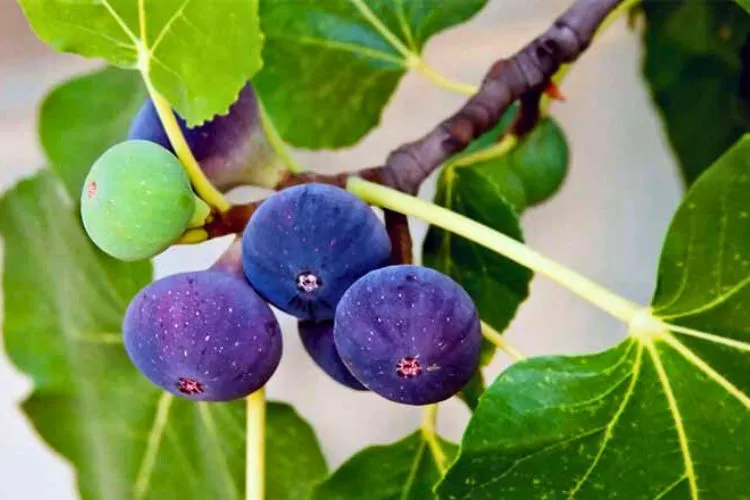
We’ll discuss the characteristics of fig trees, the importance of planting under them, and provide a comprehensive guide to help you choose the best plants for your garden.
Whether looking for shade-loving shrubs or vibrant flowers, this guide will help you create a beautiful and productive garden space under your fig tree. So, let’s dive in and discover the best plants to grow under a fig tree!
Table of Contents
Understanding the Characteristics of Fig Trees
Before deciding what to plant under a fig tree, it’s important to understand the unique characteristics of the tree itself.
Fig trees have a complex root system, sun and shade tolerance, and moderate water and nutrient requirements that impact the growth and survival of other nearby plants. Let’s have a look at these factors in detail:
Root System of Fig Trees
Before deciding what to plant under a fig tree, it’s important to understand the characteristics of the tree itself. Fig trees have a unique root system that allows them to thrive in various soil conditions. They have shallow and deep roots that can extend up to three times the tree’s height.
This means that the tree’s root system can occupy a significant amount of space in the ground, impacting the growth and survival of other plants growing in close proximity.
Therefore, it’s important to consider the tree’s root system and how it may interact with the root systems of other plants.
For example, The shallow roots of the fig tree can compete with other plants for water and nutrients, while the deeper roots can make it difficult for other plants to establish their own root systems.
Additionally, the root system of the fig tree can also impact the soil’s pH level, as the tree releases organic acids into the soil to help break down nutrients. This can affect the growth and survival of other plants growing in the same area.
Sun and Shade Tolerance
Fig trees are known for their ability to thrive in various light conditions, from full sun to partial shade. While they prefer full sun exposure, they can tolerate some shade, particularly during the hottest parts of the day.
When selecting plants to grow under a fig tree, it’s important to consider the amount of sun and shade the area receives throughout the day.
Plants that require full sun exposure may struggle to grow under a fig tree that provides partial shade. Conversely, plants that prefer shade may struggle to thrive under a fig tree that allows excessive sun exposure.
Water and Nutrient Requirements
Fig trees have moderate water and nutrient requirements, but providing them with the right balance of these resources is important to ensure healthy growth and fruit production.
When watering fig trees, they prefer well-drained soil that is moist but not waterlogged. Overwatering can lead to root rot and other issues, so it’s important to water fig trees on a consistent schedule and avoid saturating the soil.
The watering frequency will depend on the climate and weather conditions, but as a general rule, fig trees require moderate watering.
Regarding nutrient requirements, fig trees require a balance of nitrogen, phosphorus, and potassium to thrive. They can obtain these nutrients through their root system, which can extend up to three times the tree’s height.
Additionally, fig trees are able to fix nitrogen from the air and convert it into a usable form for the tree.
To ensure that your fig tree receives the proper nutrients, it’s important to prepare the soil with a balanced fertilizer before planting. You can also add organic matter like compost to the soil to help improve its nutrient content.
Additionally, it’s important to avoid over-fertilizing fig trees, as this can lead to excessive growth and poor fruit production.
What to Plant Under a Fig Tree (Plants That Thrive)
Once you’ve considered the unique characteristics of your fig tree, it’s time to select plants that will thrive under its shade and complement the tree’s beauty.
In this section, we will explore a variety of plants that are well-suited for growing under a fig tree, including shrubs, ground covers, and flowers.
Shrubs
Shrubs are a great option for planting under a fig tree, as they provide a beautiful and low-maintenance ground cover that can thrive in partial shade. Here are some of the best shrubs to grow under a fig tree:
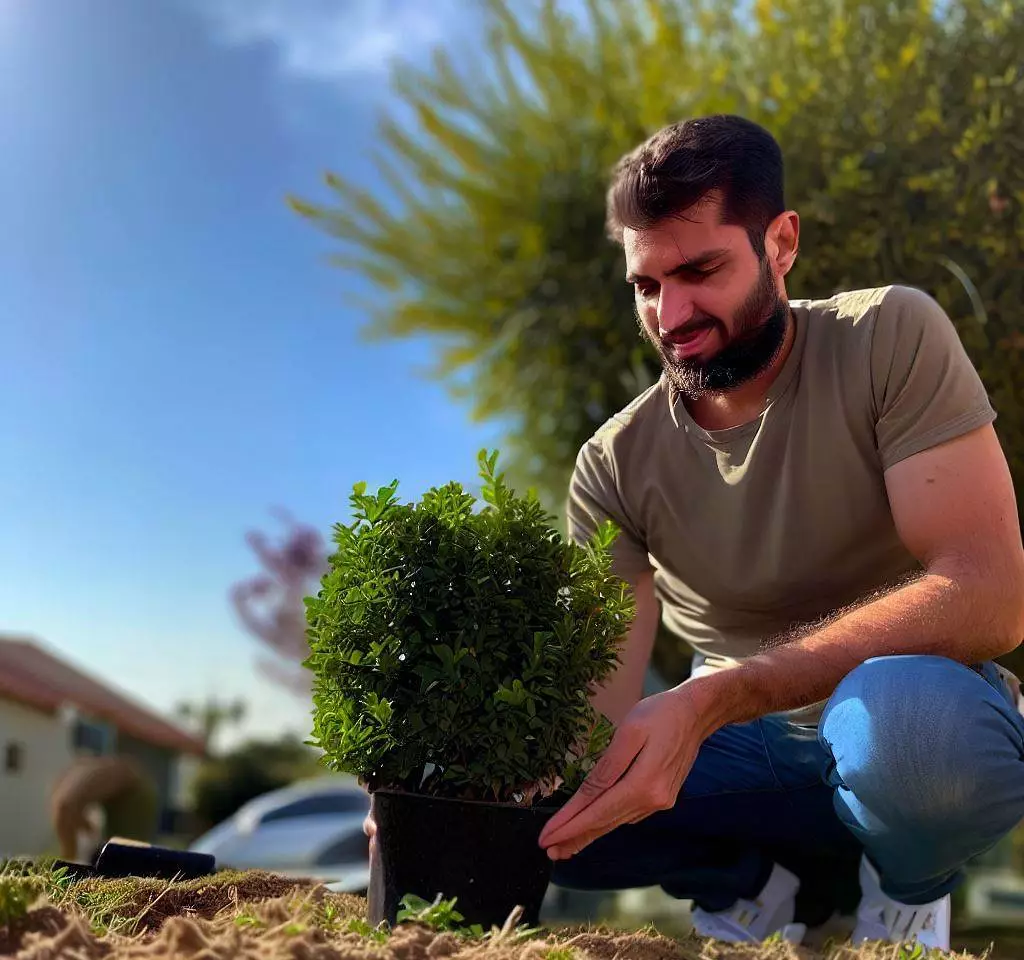
- Azaleas: AzaleasDo Azaleas Attract Bees? (An Accurate Guide) are a popular choice for planting under a fig tree because they can provide vibrant pops of color with their bright blooms in shades of pink, red, orange, and white. Additionally, these shrubs can tolerate some shade and create a stunning contrast with the fig tree’s trunk and branches. Azaleas prefer acidic soil and can help to attract pollinators to your garden.
- Camellias: Camellias are another great option for planting under a fig tree, as they can provide stunning, evergreen foliage and beautiful blooms in various colors. Additionally, these shrubs can tolerate partial shade and create a lush and vibrant garden space. Camellias prefer well-drained soil and can help to attract pollinators and create a beautiful and peaceful garden environment.
- Fuchsias: Fuchsias are a versatile and beautiful option for planting under a fig tree, as they can provide unique and striking blooms in various colors, including pink, purple, and red. These shrubs can also tolerate partial shade and create a lively and vibrant garden space. Fuchsias prefer well-drained soil and can help to attract pollinators and create a stunning visual display in your garden.
All these shrubs can thrive when grown under a fig tree because they can tolerate the partial shade and compete with the fig tree’s root system for water and nutrients.
Additionally, these shrubs can help to suppress weed growth and create a lush and vibrant garden space that enhances the beauty of the fig tree.
Ground Covers
Ground covers are a great option for planting under a fig tree, as they can help to suppress weed growth and create a low-maintenance and beautiful garden space.
Here are some additional options for ground covers that can thrive under a fig tree:
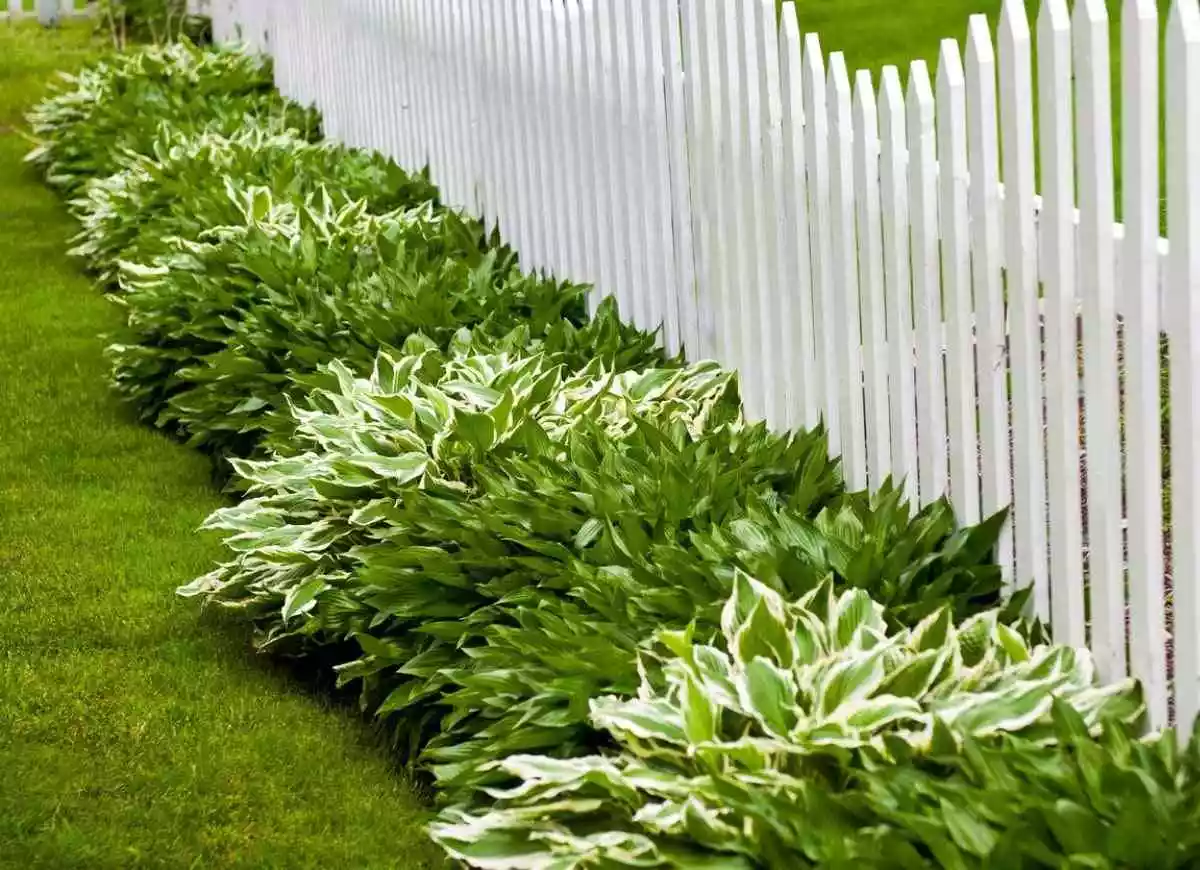
- Vinca Minor: Vinca minor is popular for planting under a fig tree because it can provide beautiful evergreen foliage and delicate blue or purple flowers that can add a pop of color to your garden space. Additionally, this ground cover can tolerate partial shade and can help to attract pollinators to your garden.
- Pachysandra: Pachysandra is another great option for planting under a fig tree because it can provide lush evergreen foliage that can create a beautiful contrast with the tree’s trunk and branches. Additionally, this ground cover can tolerate partial shade and help prevent soil erosion and retain moisture in the soil.
- Hostas: Hostas are a versatile and beautiful option for planting under a fig tree because they can provide stunning foliage in various colors and textures that can enhance the natural beauty of your garden space. Additionally, this ground cover can tolerate partial shade and help suppress weed growth and retain moisture in the soil.
All of these ground covers can thrive under a fig tree because they can also tolerate the partial shade and compete with the fig tree’s root system for water and nutrients.
Additionally, these ground covers help to create a lush and vibrant garden space that enhances the beauty of the fig tree. With a variety of options, you can select the ground cover that best complements the natural beauty of your fig tree and creates a low-maintenance and beautiful garden space.
Flowers
Flowers are a beautiful and vibrant option for planting under a fig tree, as they can add pops of color and create a lively and lush garden space. Here are some additional reasons why each flower can thrive under a fig tree:
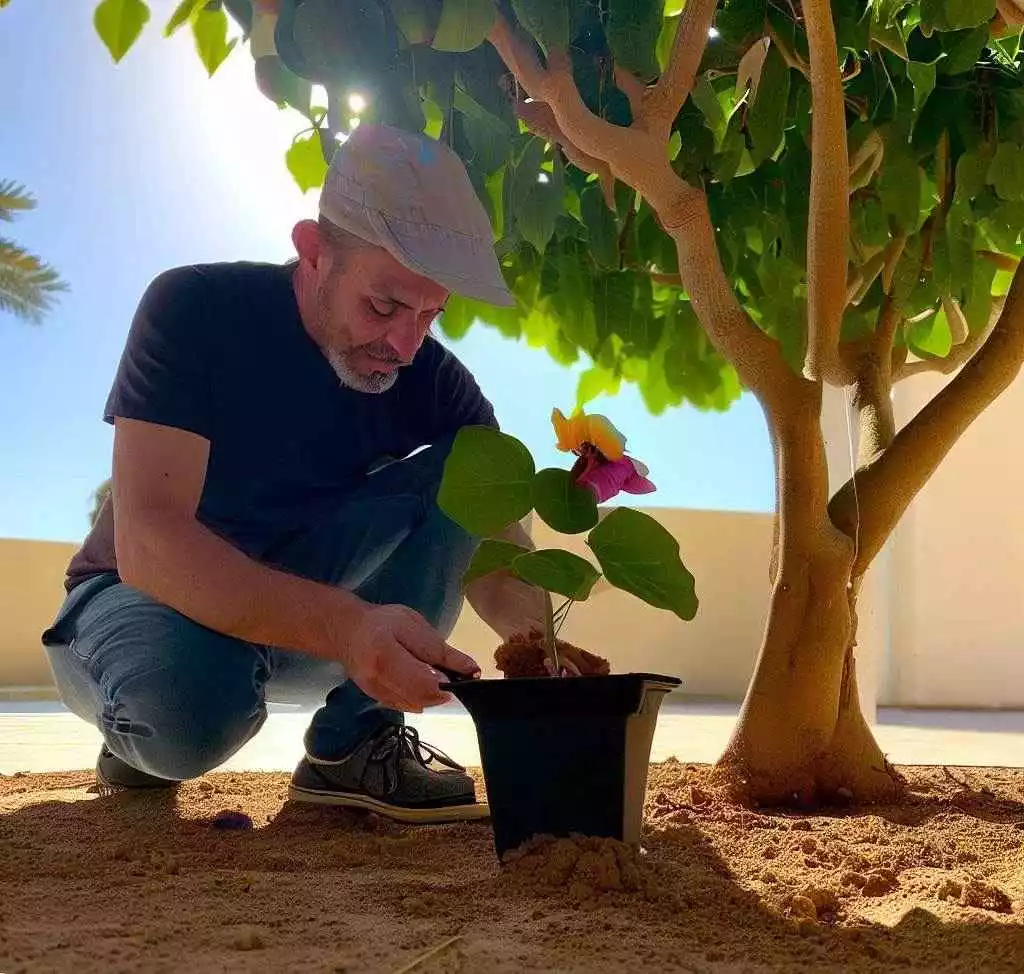
- Begonias: Begonias are a popular choice for planting under a fig tree because they can tolerate partial shade and have unique foliage that can add visual interest to your garden space. Additionally, these flowers can bloom in various colors, including pink, red, orange, and white, and can help attract pollinators to your garden.
- Impatiens: Impatiens are another great option for planting under a fig tree because they can tolerate partial shade and have delicate blooms in shades of pink, purple, and white that can create a soft and elegant garden space. Additionally, these flowers can help to attract pollinators and create a lively and vibrant garden environment.
- Geraniums: Geraniums are a versatile and beautiful option for planting under a fig tree because they can tolerate partial shade and have stunning blooms in a variety of colors, including red, pink, and white. Additionally, these flowers have a unique scent that can add to your garden space’s sensory experience and help attract pollinators.
All of these flowers can thrive under a fig tree because they can tolerate the partial shade and compete with the fig tree’s root system for water and nutrients.
Additionally, these flowers can help to create a beautiful and lively garden space that enhances the natural beauty of the fig tree. With a variety of options, you can select the flowers that best complement the natural beauty of your fig tree and create a vibrant and beautiful garden space.
Plants to Avoid Planting Under a Fig Tree
When it comes to planting under a fig tree, choosing the right plants that can thrive in the tree’s unique growing conditions is important. However, some plants should be avoided when planting under a fig tree.
In this section, we’ll explore some plants that may not be a good fit for planting under a fig tree and why.
Competitive Plants
- Grass: Grass is a plant that should be avoided when planting under a fig tree because it can compete with the tree’s roots for water and nutrients. Additionally, grass requires full sun exposure to thrive, which can limit the amount of available sunlight for the fig tree and other plants growing under it.
- Bamboo: Bamboo is another plant that should be avoided when planted under a fig tree because it can quickly spread and become invasive. Additionally, bamboo can compete with the fig tree’s root system for water and nutrients, limiting the tree’s growth and health.
- Large Shrubs or Trees: Large shrubs or trees should also be avoided when planting under a fig tree because they can compete with its root system for water and nutrients. Additionally, large shrubs or trees can create a dense canopy that can limit the available sunlight for the fig tree and other plants growing under it.
Plants That Require Full Sunlight
- Roses: Roses are a plant that requires full sunlight to thrive and, therefore, should not be planted under a fig tree. When planted in partial shade, rose plants may not produce as many flowers and may be more susceptible to diseases and pests. Additionally, roses can compete with the fig tree’s root system for water and nutrients.
- Lavender: Lavender is another plant that requires full sunlight to thrive and should not be planted under a fig tree. When planted in partial shade, lavender may not grow as tall and may not produce as much fragrance. Additionally, lavender can compete with the fig tree’s root system for water and nutrients.
- Mint: Mint is a ground cover plant that should be avoided when planting under a fig tree because it can quickly spread and become invasive. Additionally, mint can compete with the fig tree’s root system for water and nutrients, limiting the tree’s growth and health.
Plants That Need Well-Drained Soil
- Hydrangeas: Hydrangeas are a popular shrub that requires well-drained soil to thrive and should not be planted under a fig tree. When planted in poorly drained soil, hydrangeas may be more susceptible to root rot and other diseases. Additionally, the fig tree’s unique root system can make it difficult to create well-drained soil conditions.
- Astilbes: Astilbes are a flower that requires well-drained soil to thrive and should not be planted under a fig tree. Astilbes may be more susceptible to root rot and other diseases when planted in poorly drained soil. Additionally, the fig tree’s unique root system can make it difficult to create well-drained soil conditions.
- Creeping Jenny: Creeping Jenny is a ground cover plant that requires well-drained soil to thrive and should not be planted under a fig tree. When planted in poorly drained soil, creeping jenny may not spread as quickly and may be more susceptible to root rot and other diseases. Additionally, the fig tree’s unique root system can make it difficult to create well-drained soil conditions.
Tips for Planting Under a Fig Tree
This section will provide some helpful tips for planting under a fig tree. While fig trees can provide a beautiful and unique garden space, planting under them can present challenges due to the tree’s unique root system and partial shade.
However, with the right tips and techniques, you can create a thriving garden space that complements the natural beauty of the fig tree.
Preparing the Soil
Before planting under a fig tree, preparing the soil to ensure your plants have the best growing conditions possible is important.
One of the most important things to do is to loosen the soil around the tree’s roots, as the fig tree’s root system can make it difficult for water and nutrients to reach other plants.
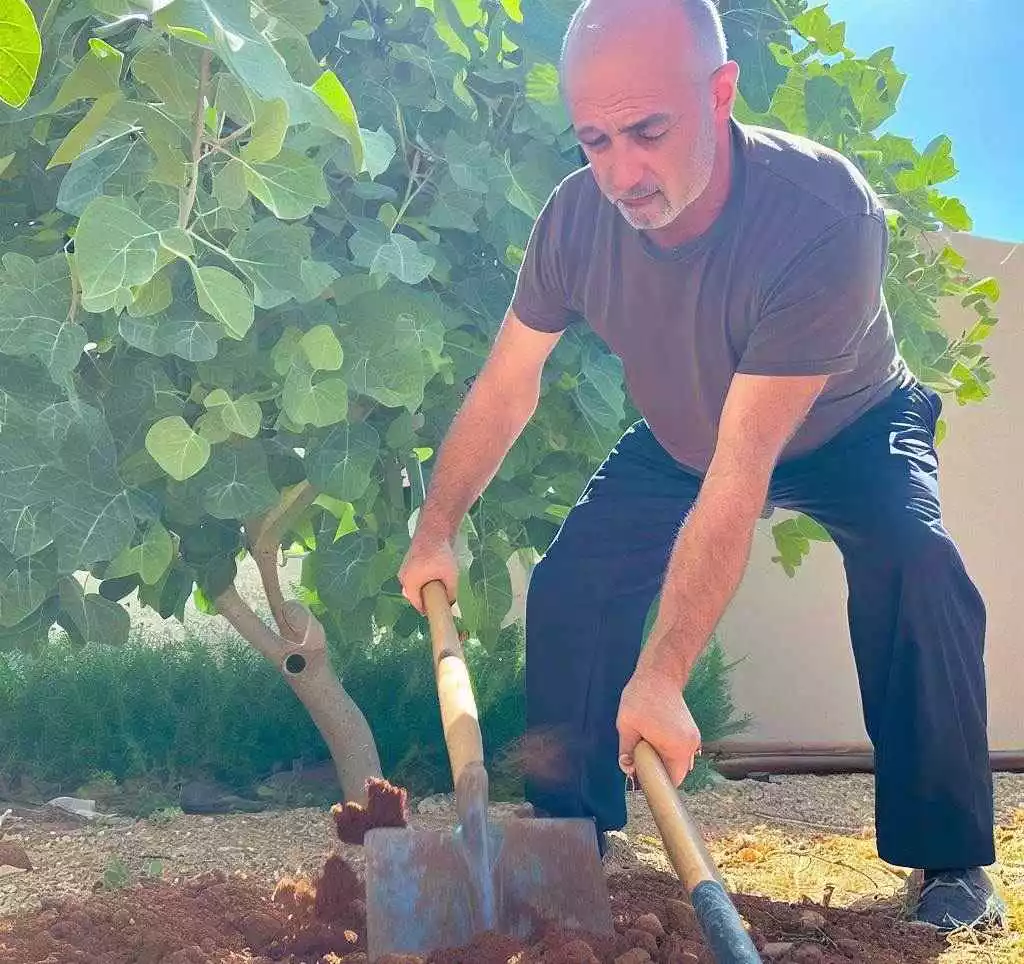
- Use a garden fork or hand trowel to carefully loosen the soil, not damaging the tree’s roots.
- You may also want to add some organic matter to the soil to help improve its texture and nutrient content.
- Test your soil’s pH level to ensure it falls within the appropriate range for the plants you plan to grow.
- Consider adding some sand or perlite to the soil to improve drainage.
- Mix in some well-aged compost or manure to help provide additional nutrients for your plants.
Watering the Plants
When watering plants under a fig tree, it’s important to be mindful of the tree’s water needs as well as the needs of the plants. Fig trees require regular watering, but over-watering can cause the tree’s roots to rot and drown other plants growing under it.
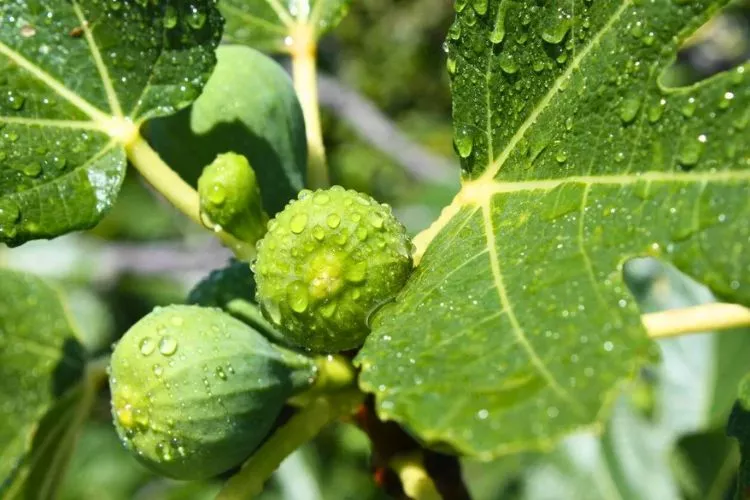
- To avoid over-watering, consider using a soaker hose or drip irrigation system to deliver water directly to the base of the plants. This can also help reduce evaporation and keep the soil moist for longer.
- Water your plants early in the morning or evening to reduce water loss from evaporation.
- Avoid getting water on the leaves of your plants, as this can increase the risk of disease.
- Consider using a rain gauge to measure how much water your plants receive each week.
Mulching
Mulching is an important part of planting under a fig tree, as it can help regulate soil temperature, retain moisture, and suppress weed growth.
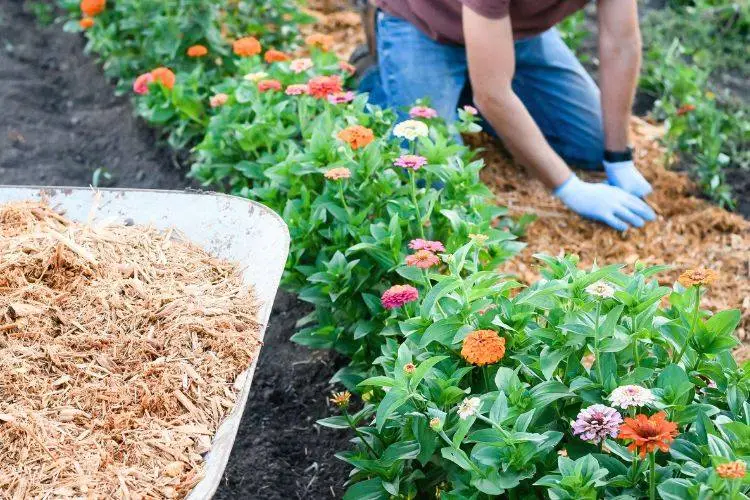
- Use organic mulch such as wood chips, leaves, or grass clippings to a depth of about 2-3 inches.
- Be careful not to pile the mulch too high against the base of the plants, as this can create a breeding ground for pests and disease.
- Be sure to keep the mulch about an inch away from the base of the plants to prevent stem rot.
- Check the mulch regularly and add more to maintain a consistent depth.
- Consider using a reflective mulch such as aluminum foil to help reflect sunlight onto your plants and increase their growth.
Fertilizing
Fertilizing can help provide the necessary nutrients for plants growing under a fig tree to thrive. However, it’s also important to be mindful of the fig tree’s nutrient needs.
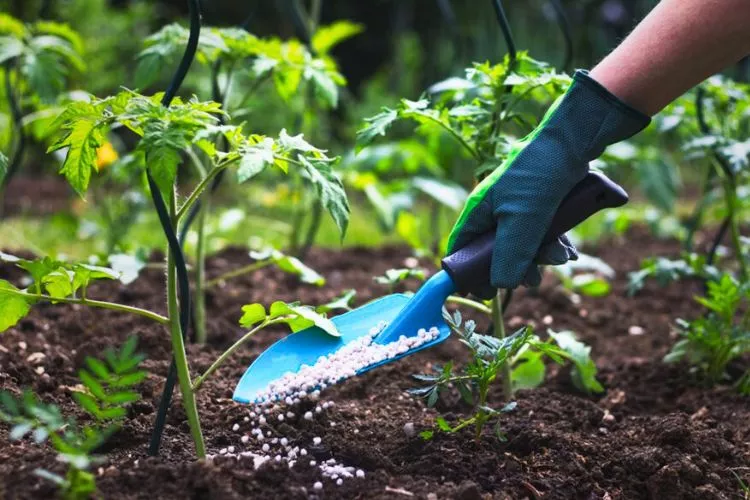
- Avoid using high-nitrogen fertilizers, as these can encourage too much leaf growth at the expense of fruit production. Instead, consider using a balanced fertilizer with a higher phosphorus content to promote flower and fruit development.
- Be sure to follow the manufacturer’s instructions for application rates and frequency.
- Consider using organic fertilizers such as compost tea or fish emulsion to provide nutrients to your plants.
- Apply fertilizers sparingly and follow the manufacturer’s instructions for proper application rates and frequency.
- Consider using a foliar spray to apply nutrients directly to your plants’ leaves for faster absorption.
Pruning
Pruning is an important part of maintaining healthy plants under a fig tree.
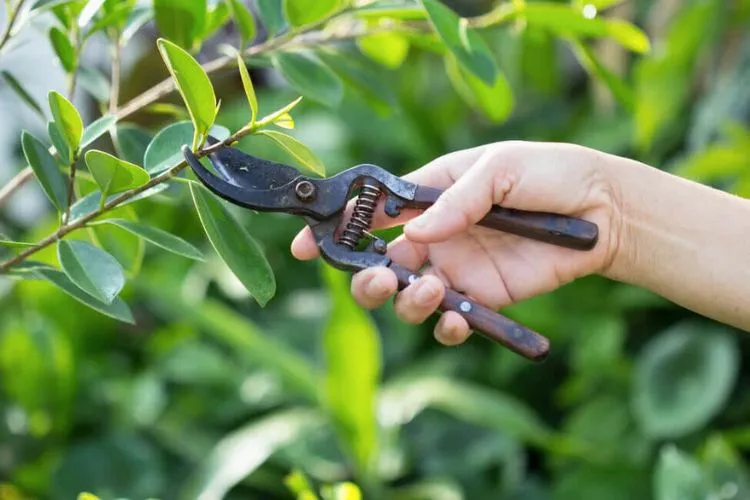
- Be sure to prune any dead or damaged branches and any branches competing with the fig tree for sunlight or nutrients. It’s also important to prune your plants so they don’t damage the fig tree’s roots.
- Consider using a hand pruner or a pruning saw to remove any unwanted branches or growth.
- Use clean, sharp tools to avoid damaging your plants and prevent disease spread.
- Avoid pruning your plants during periods of active growth, as this can cause stress and reduce fruit production. Consider using the “thinning” method.
Frequently Asked Questions (FAQs)
Can fig trees grow with other plants?
Yes, fig trees can grow with other plants, as long as they are chosen carefully to ensure they can thrive in the same growing conditions as the fig tree.
Can herbs be planted under a fig tree?
Yes, herbs can be planted under a fig tree, as long as they are chosen carefully to ensure they can thrive in the same growing conditions as the fig tree.
What kind of soil do fig trees prefer?
Fig trees prefer well-draining soil rich in organic matter, with a pH range between 6.0 and 6.5.
How often should I water the plants under a fig tree?
The watering frequency depends on the specific plants and their water needs, but it’s important to be mindful of not over-watering, as this can cause root rot.
Should I avoid planting vegetables under a fig tree?
It’s generally recommended to avoid planting vegetables under a fig tree, as they have different nutrient requirements and may not thrive in the same soil conditions as the fig tree.
Conclusion:
In conclusion, planting under a fig tree can be a rewarding experience if done correctly. It’s important to select plants that can tolerate partial shade and the fig tree’s root system and to take steps to prepare the soil and provide proper care for your plants.
We hope that this guide has been helpful. You can read about similar topics here on our website. Check back again soon for more.


